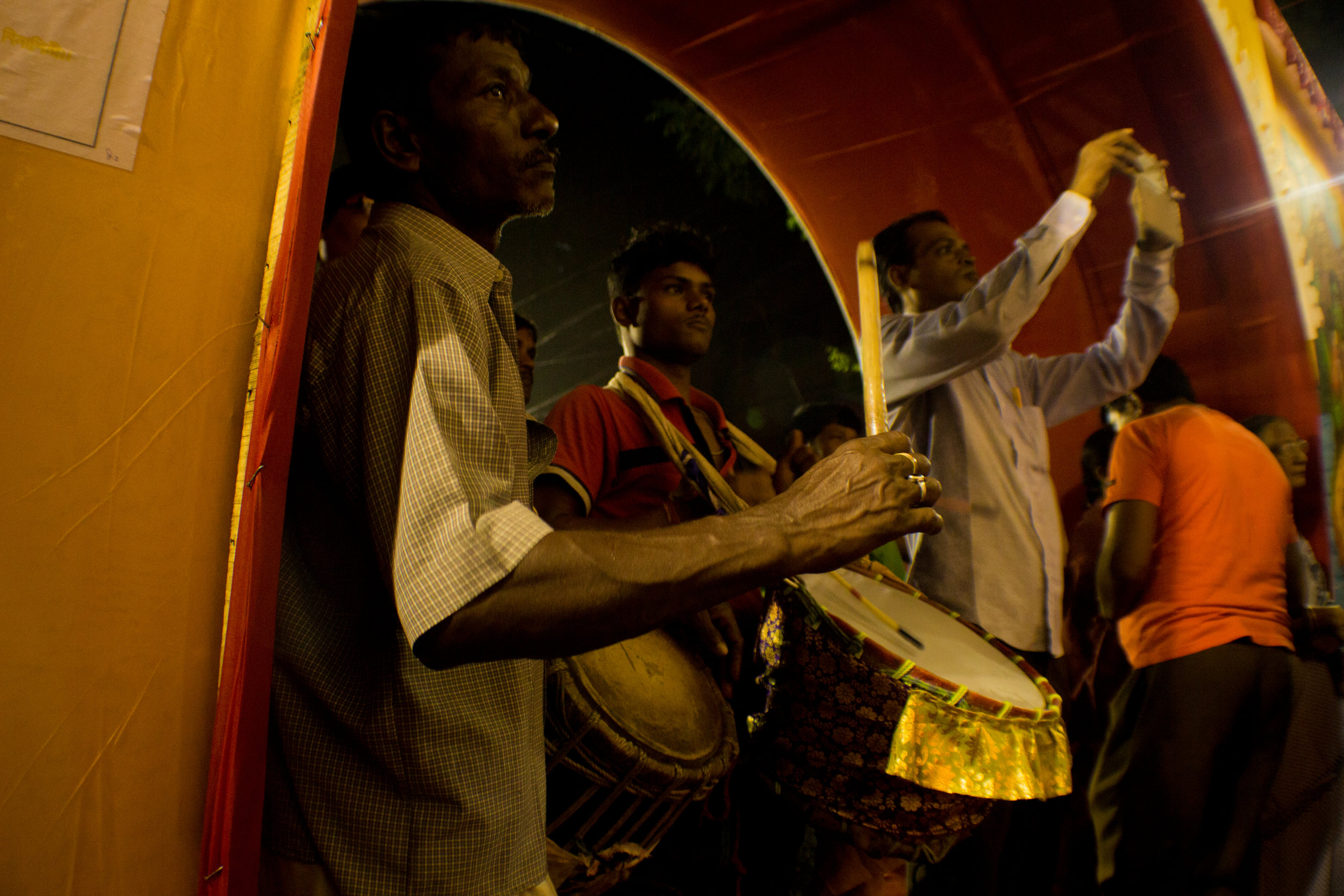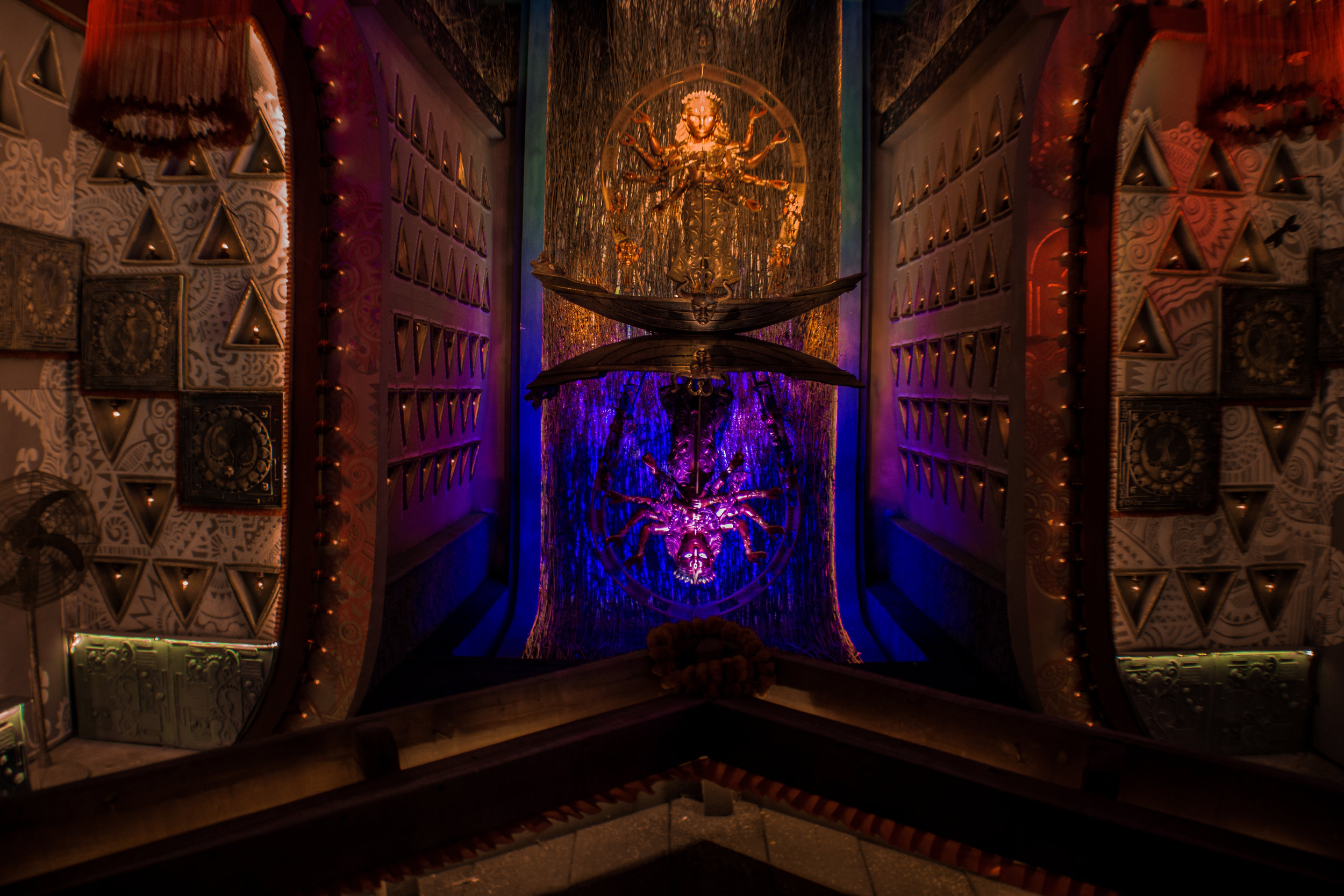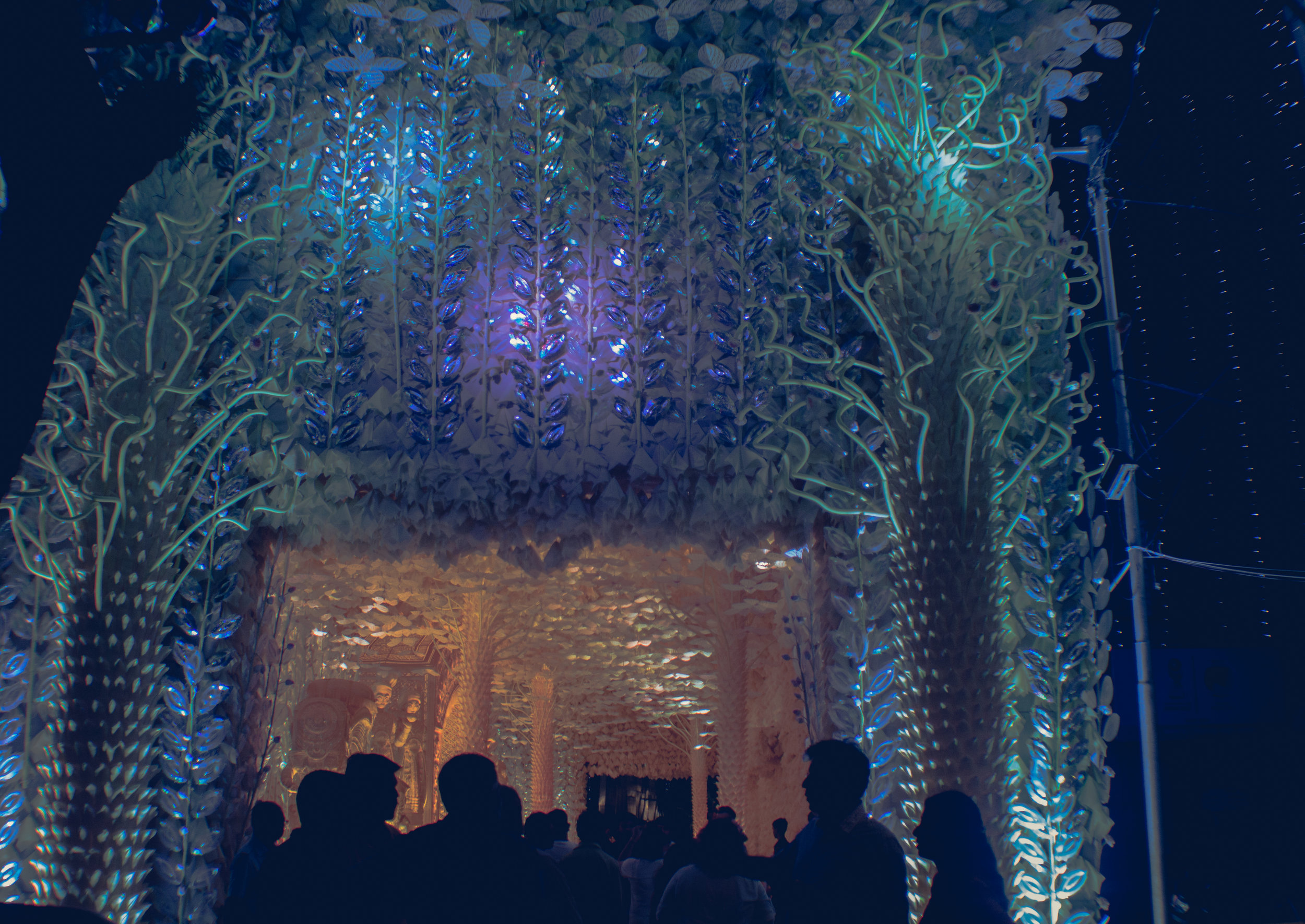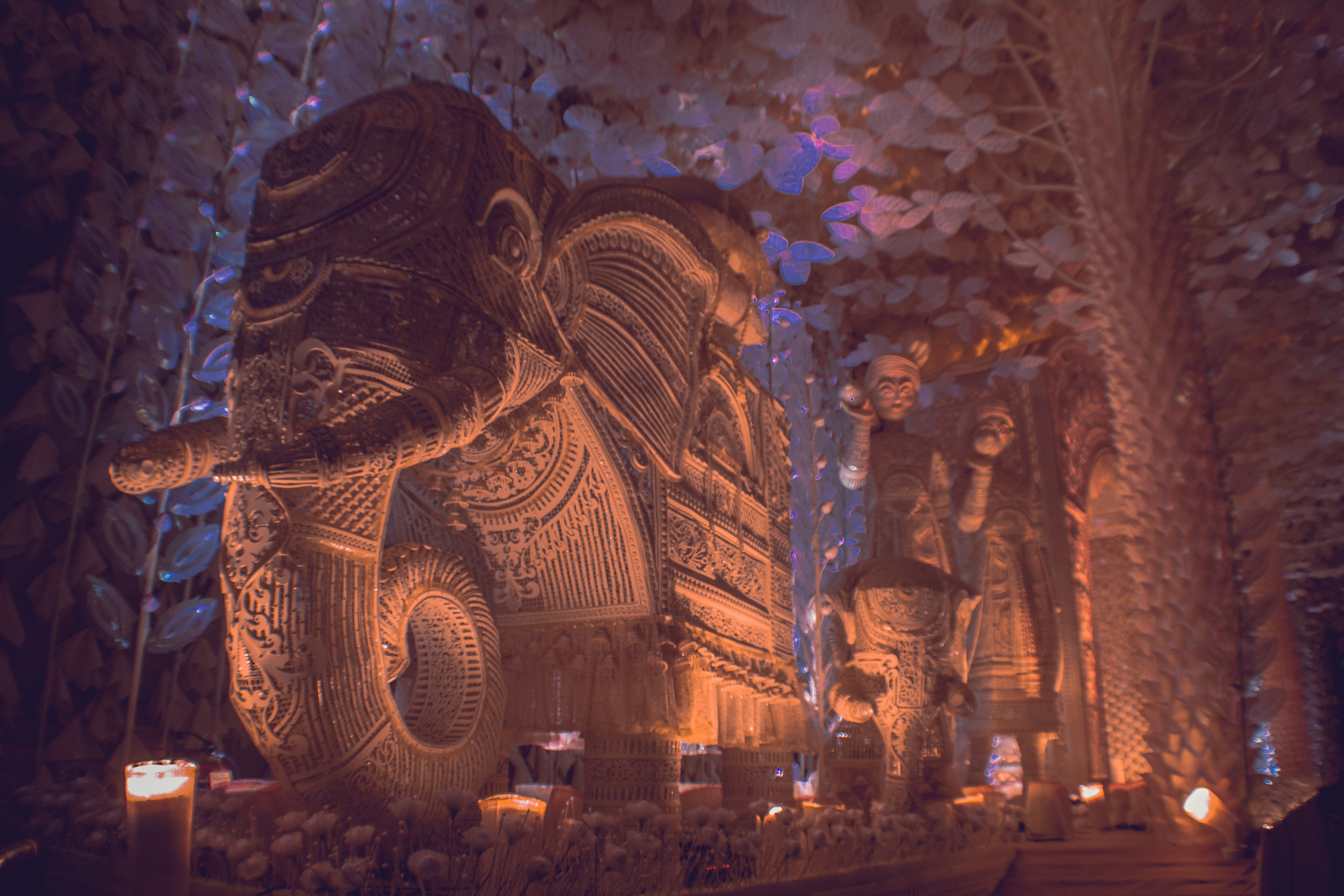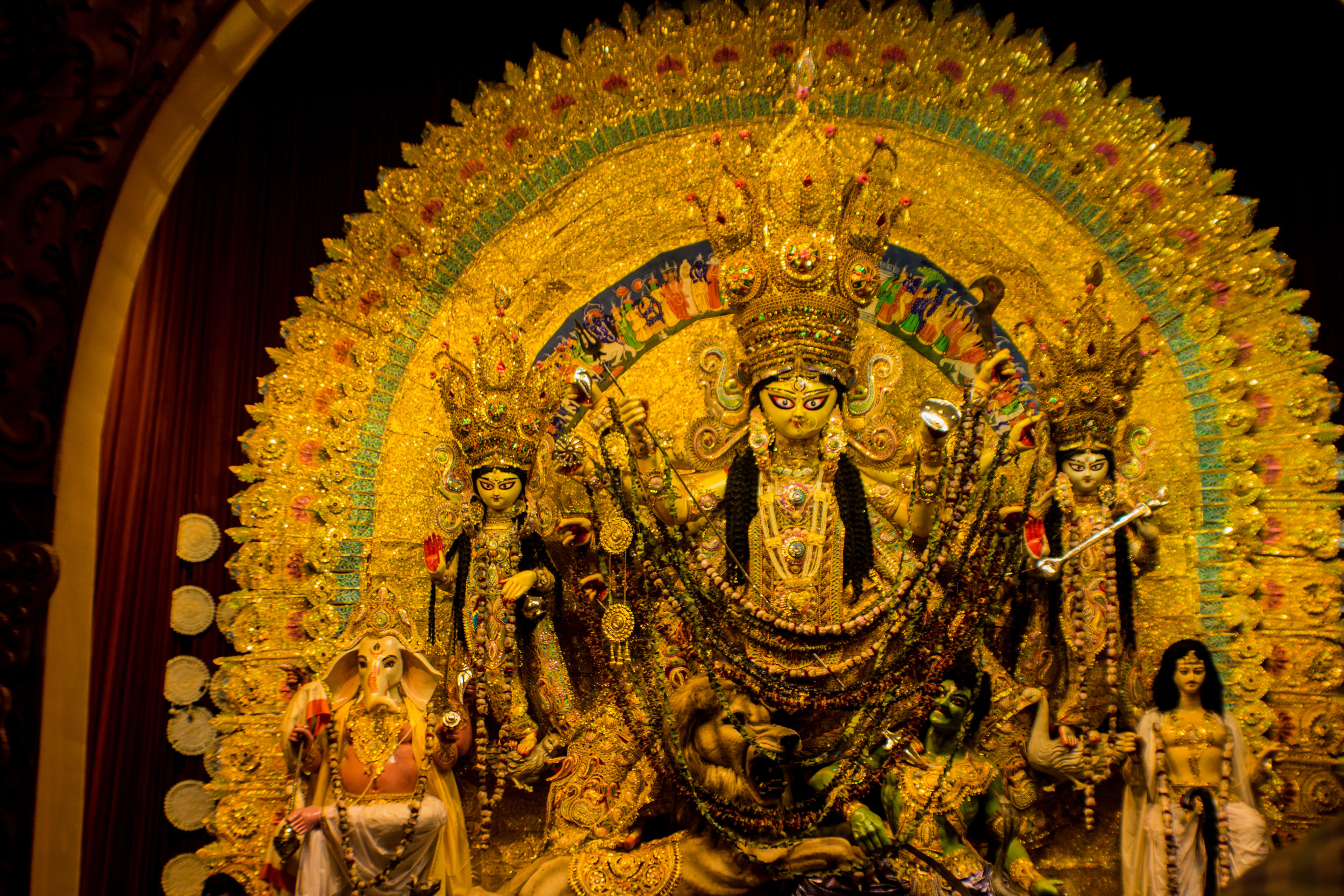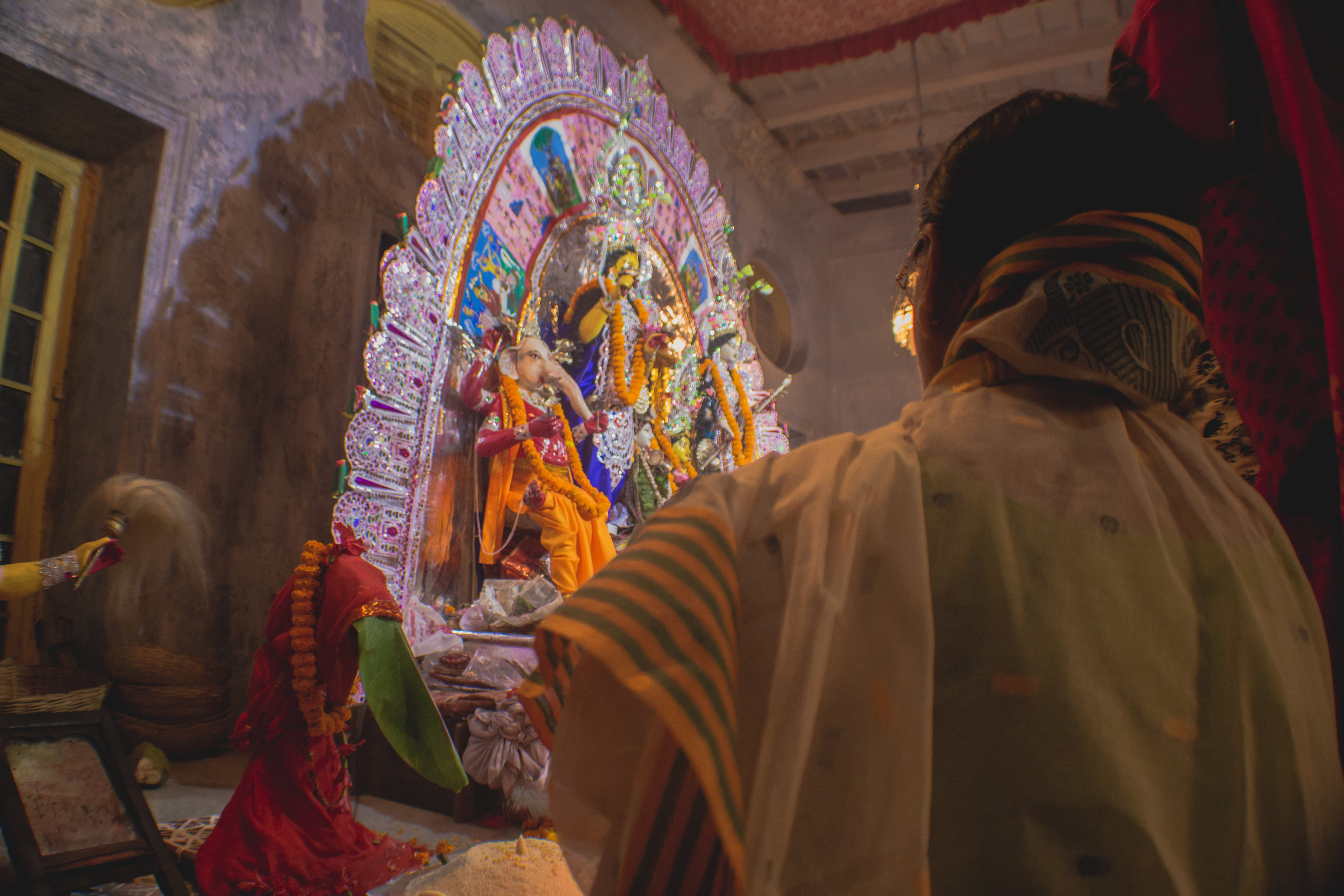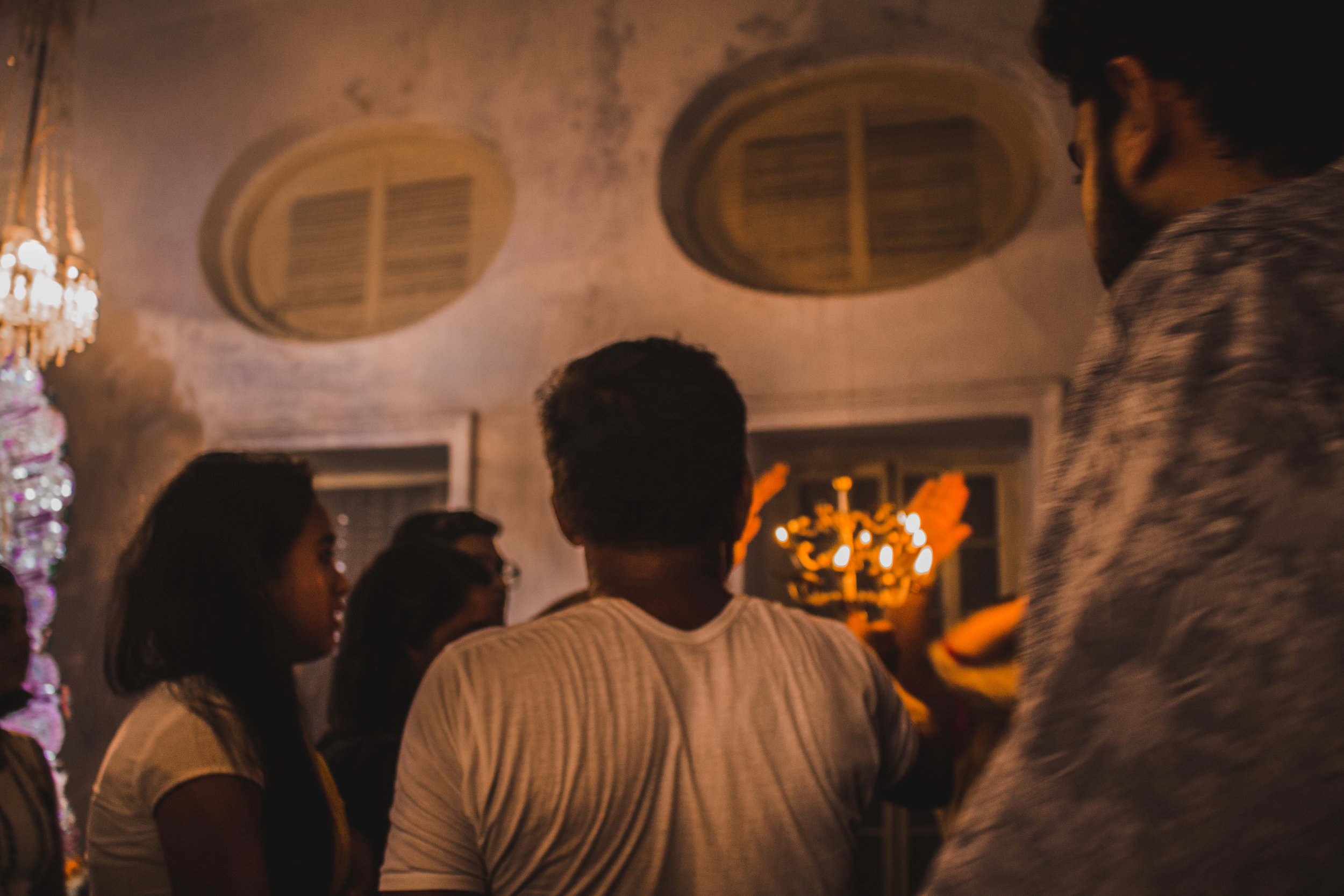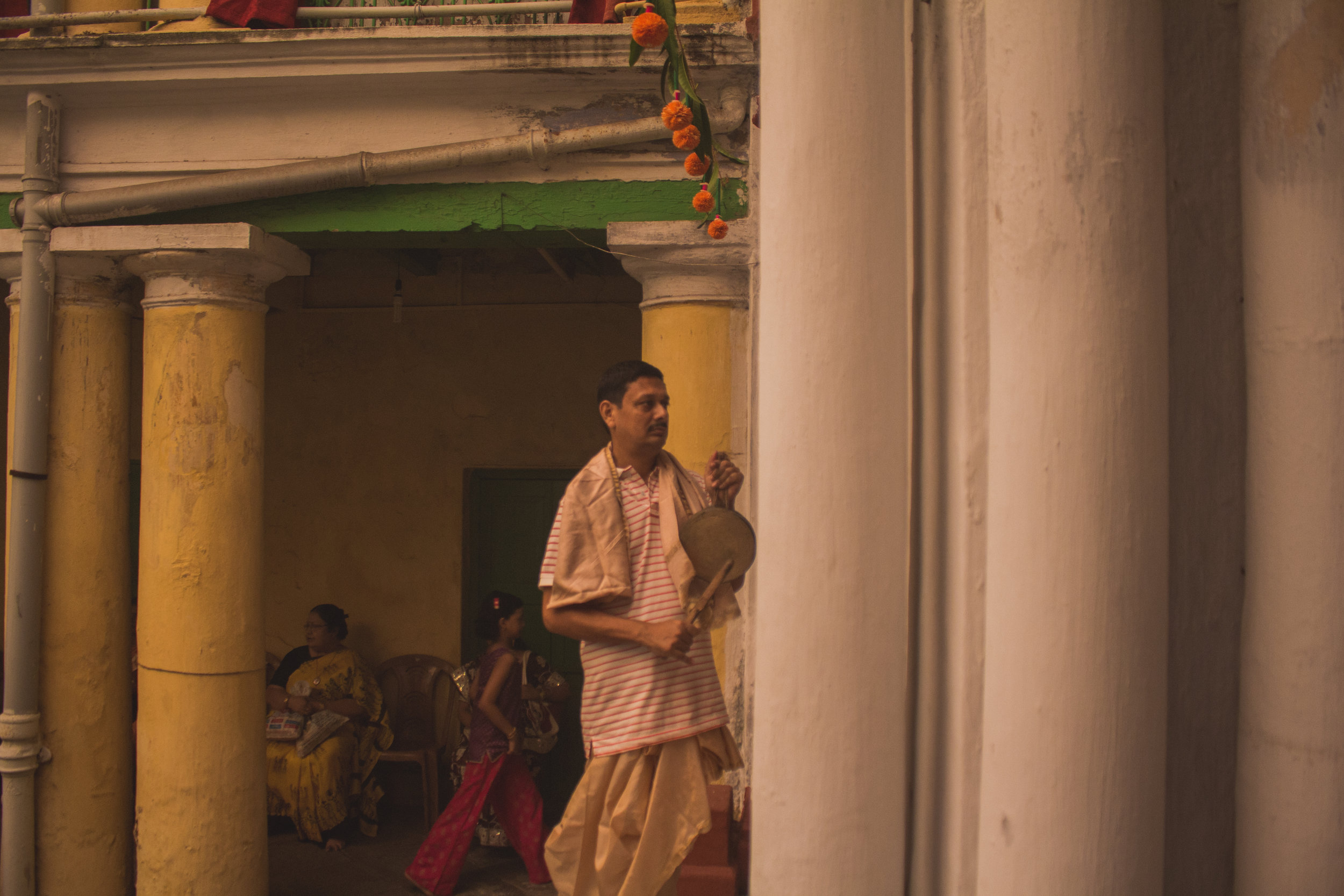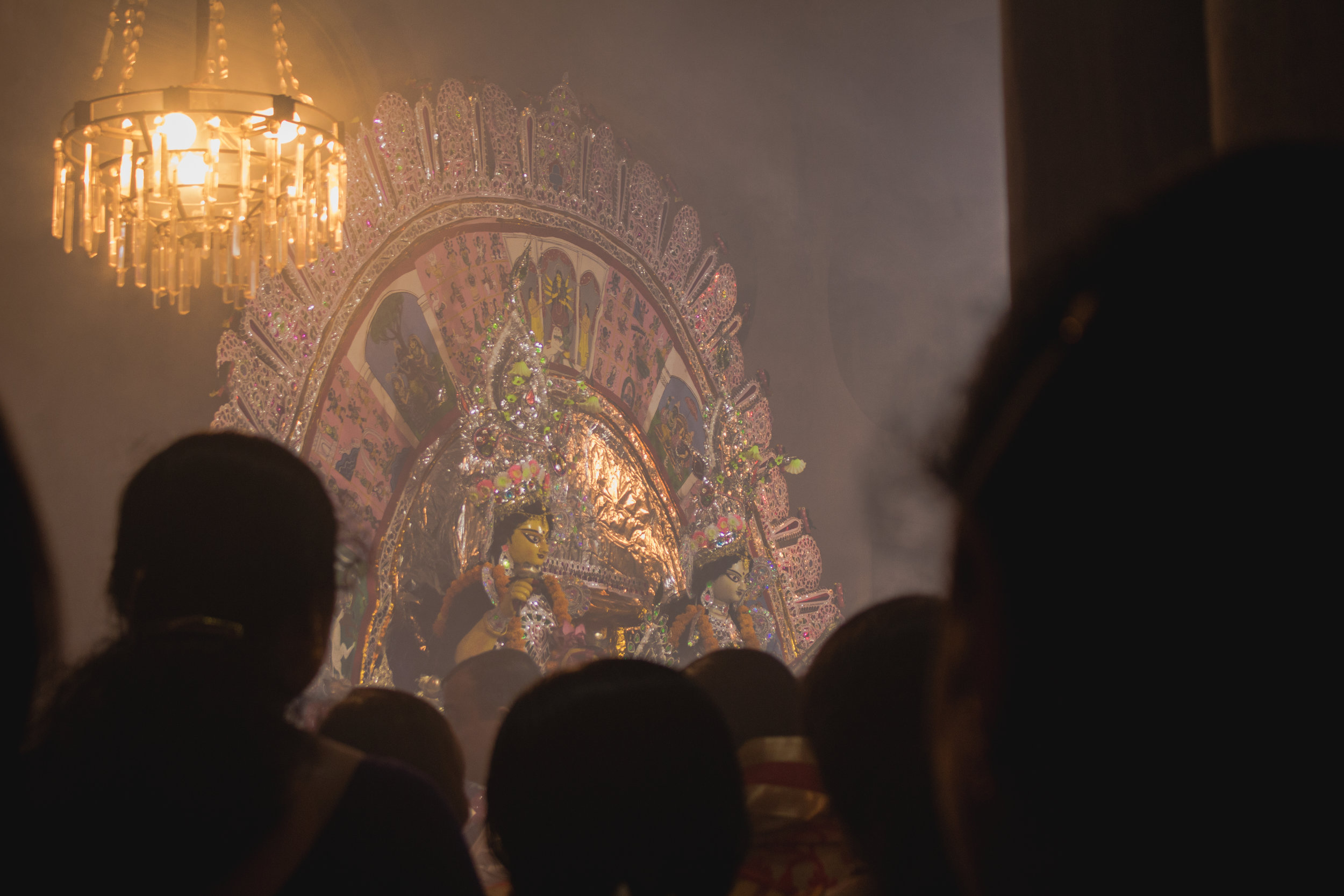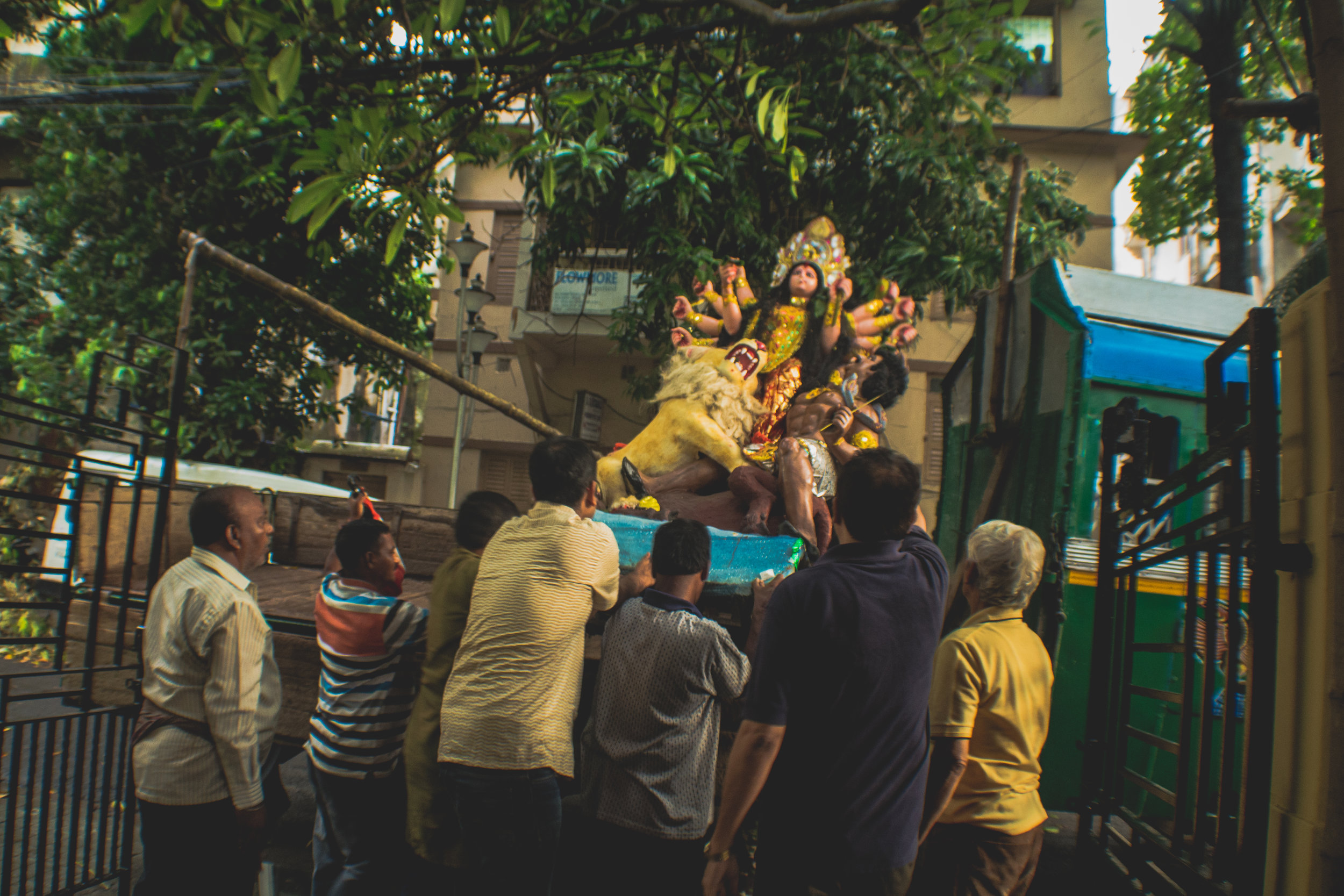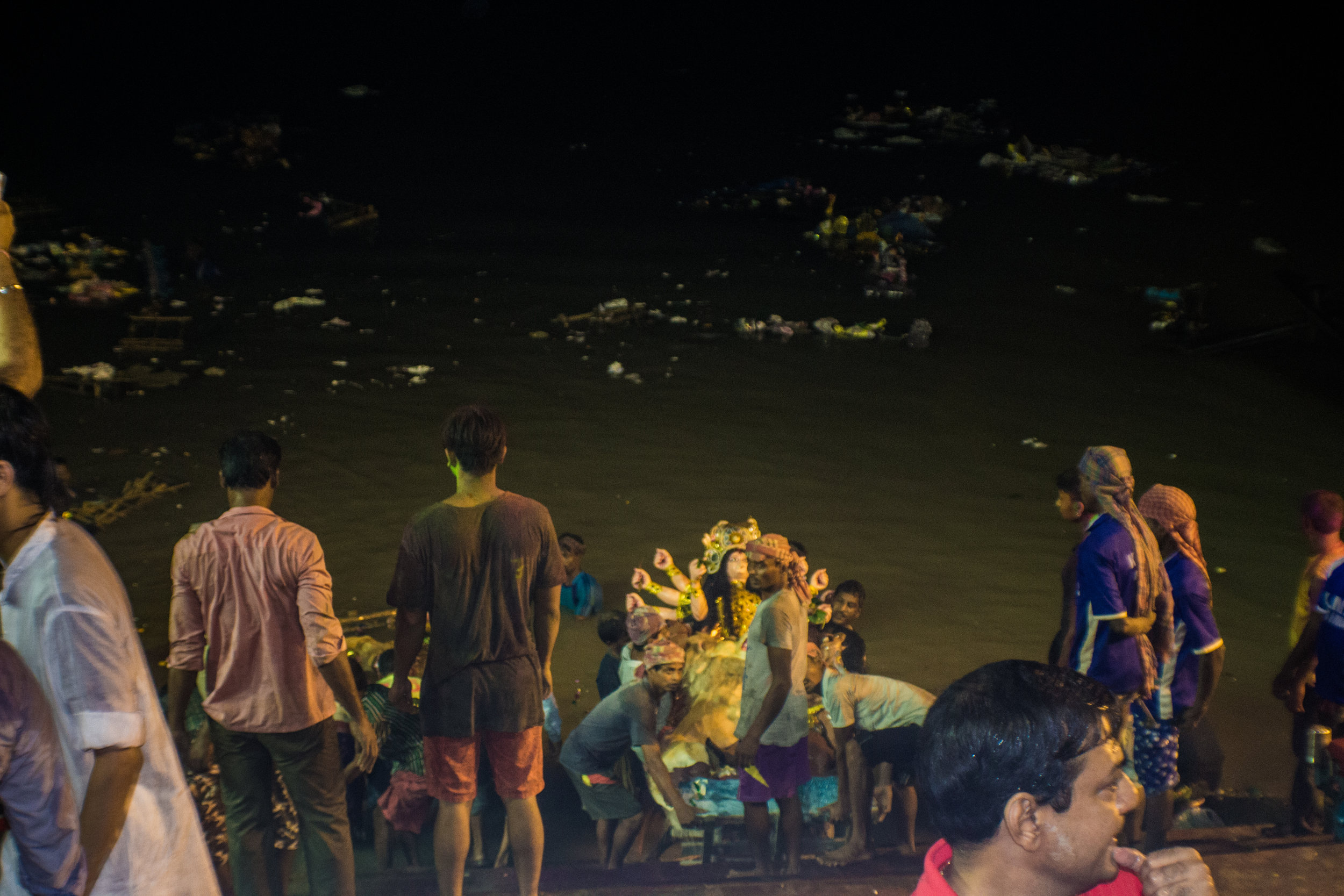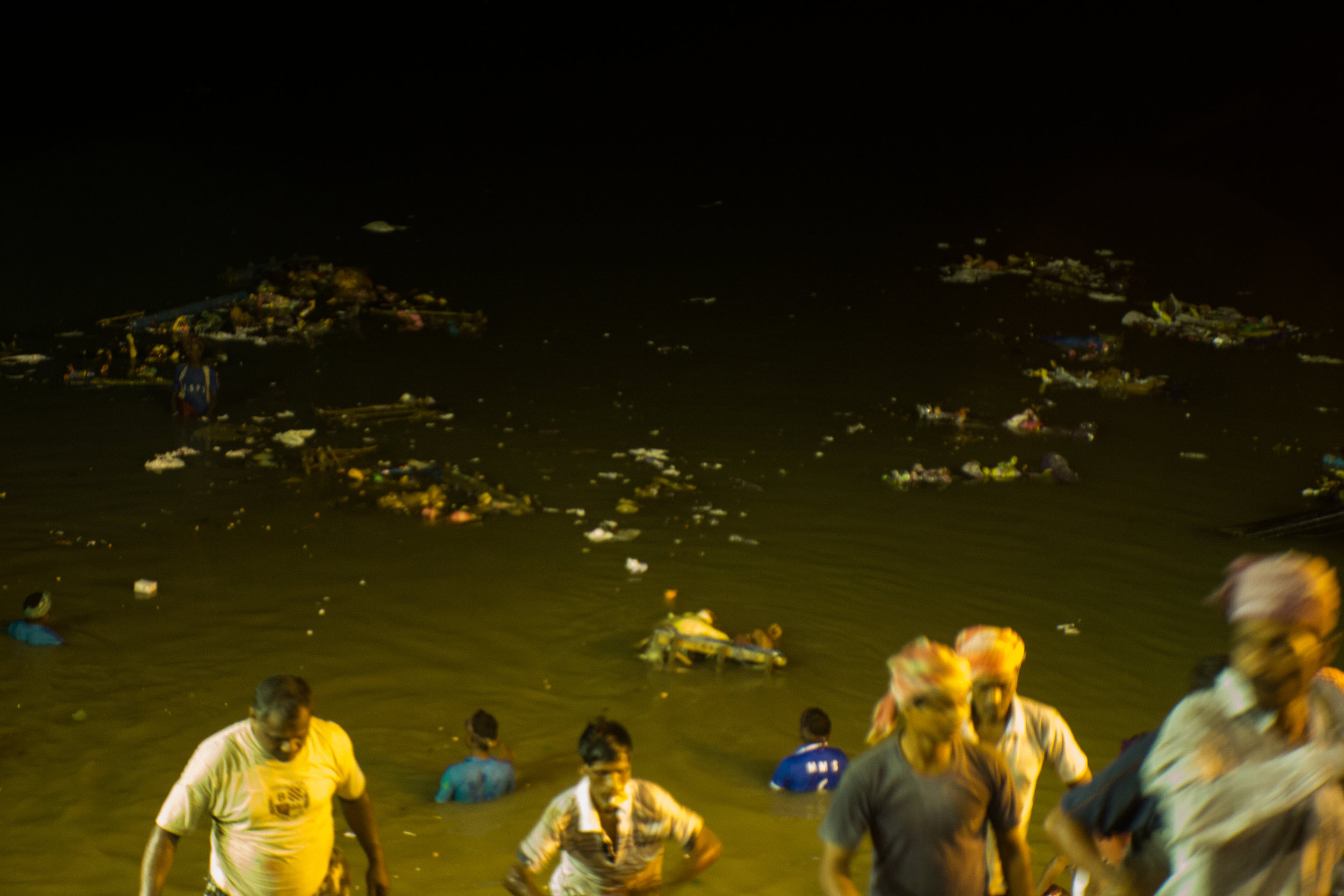a goddess of small things
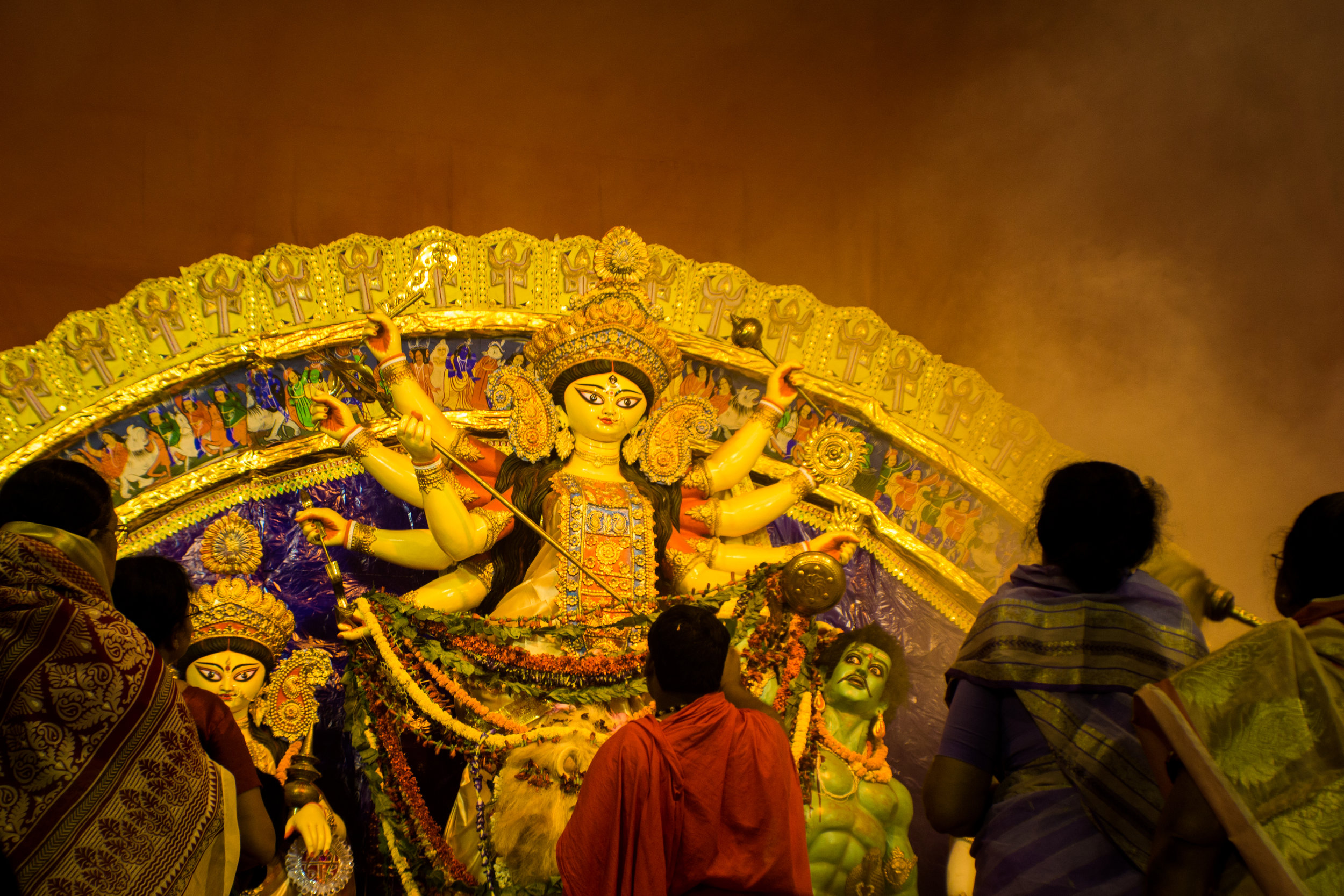
Durga Puja celebrations commemorated by the Mullick family in Central Kolkata.
Autumn is a season of festivities all around the world. Like many during this time of year, the denizens of Kolkata, India, dust off their bells and whistles for another year of jollity. For the first time since I was eleven, I was peering head-on at the basis of my identity: my namesake, the Hindu goddess Durga. In Kolkata, and particularly for Bangali Indians, this time of year is pivotal, as it is during this time that Durga is celebrated. Depending on your shade of feminism, there is much to be read into the Hindu mythology at the backbone of this festival. It is believed that at a time when the Hindu demon Asura was plotting the destruction of the universe, and no god was strong enough to defeat him, they combined their powers to create a supergod --which turned out to be Durga, a ten-handed goddess with a third eye. Yet, in today's 21st century Kolkata, Durga Puja ('puja' is any Hindu religious ritual) is hardly about inculcating a new sense of the Hindu mythology. Rather, keeping in mind the celebration of strength and vitality in the feminine form, Indians across Kolkata do what they do best: eat outrageous amounts of food, surround themselves with dance and music, and use the visits to the idols as an excuse for nighttime adventuring with friends. As I began documenting the days leading up to the festival, and each of the ten days of celebration, I bore witness to the multifaceted nature of culture and tradition, and the ways in which those have been warped and melded by time.
kumartuli.
Although Durga Puja officially occurs sometime in September or October, (This requires the leading priests in India to partake in the complex process of determining the ten most auspicious days in the Hindu calendar.) a small but meticulous community of artisans begin their work months prior. In the district of Kumartuli ("kumar" means artisan and "tuli" means locality), local sculptors and artists are commissioned by various neighborhoods in and around Kolkata to sculpt hundreds of idols using clay and other materials. These artists are fastidious, to say the least, working tirelessly to create hundreds of idols of various shapes and sizes over the course of two or three months. Each potter and artisan creates these idols with their own trademarks, and overtime many of these signatures have become recognizable to particular neighborhood where the idols are sent.
Artisans discuss the details of their craft while adding finishing touches to their sculptures, days before the start of Durga Puja.
A walk through the narrow lanes of Kumartuli during this time of year is a treat for many reasons. Rows of half painted statues of Hindu gods and goddesses line the pavements and warehouses, ready for their final makeover. Many of these sculptures are lucky enough to receive the attention and affection of frantic artists, scrambling to finish painting the eyes and noses of various holy images. As the days of quiet religious ritual have undergone their due globalized transformation, Kumartuli has become a popular place of visit by many curious and shutter happy souls, hoping to catch one last minute glimpse of an artisan working their handicraft magic.
A half finished idol is left on the side of street in Kumartuli.
Shaped like a large barrel, a dhak is an iconic instrument in Hindu rituals. Here, two dhakis add rhythm to the ceremonies honoring the goddess Durga.
'But what happens to the sculptures after they are finished?' you wonder. Once the idols are dressed, painted, and ready to be displayed, the various clubs which commission the artisans rent large moving trucks and transport the idol to the particular neighborhood where she resides for the next ten days. However, the transportation of idols is an ordeal, which requires more than just a large moving truck and a few muscle-flexors. The idol is accompanied by locals and club members, who chant and clap to the tune of drums. A local drummer, known as a dhaki, is hired to play a particularly iconic rhythm sequence on a barrel shaped drum called a dhak, letting the city know that a goddess is being brought into the locality.
Kumartuli is not the only place where artists are in a frenzy in the weeks leading up to Durga Puja. In neighborhoods throughout Kolkata, local engineers and architects work with artists to design structures called pandals, in which the idols are housed once they are brought over from Kumartuli. In recent years, the themes of these pandals have reached new heights of imagination. From east-west fusion of Harry Potter themed pandals to this year's more abstract "how society is boxed in by modernization", the mastermind of local artists and visionaries is encapsulated into sites that are visited by hundreds of people from in and around India. Many of these pandals are placed in the middle of smaller roads and by-lanes, which complicates Kolkata traffic and adds to the general conundrum of the ten days. Kolkatans however, may be found happily consuming large amount of food, indulging in Indian music, and dancing in the streets to the sounds of the dhak, in the midst of their usual traffic complaints.
A partially finished sculpture awaits her finishing touches inside an artist's warehouse in Kumartuli, days before the start of the festival.
something old, something new.
So it is the first of the ten days, and the festivities have just began. As the city wakes, hums, walks, and sleeps to the sound of the dhak, priests everywhere begin their ritual reading of the scriptures and the daily religious ceremony. During the festivities, the various localities in Kolkata tell stories of tradition. Distinctions are made between ceremonies hosted by a neighborhood club and a ceremony that has been hosted by an established family for generations. Each celebration is given a place on the ladder of tradition. Club ceremonies often carry an air of frivolity, perhaps by virtue of the amalgamation of ages and backgrounds of the organizers, and perhaps because they are a more recent phenomenon. Meanwhile, house ceremonies are typically conservative and traditional in nature, and in many cases have continued to occur for hundreds of years. Depending on whether a club or house ceremony is being attended, there is a difference in decorum and demeanor, and may generally be frequented at different hours of the day.
While club ceremonies entice large crowds in the evening, a house puja is predominantly a daytime affair. North Kolkata, an older region of the city, is particularly prominent for such family houses and traditional ceremonies. These ten days are serious business for such families. Typically different members of the joint family are given roles to fulfill, and often these roles have been passed down for generations. Regardless of whether it is a house puja or a club puja, however, a few things remain constant: the priest in charge of the day's ceremony offers the viewing public a chance to engage in prayer. These prayers are done with flower offerings, which are typically passed around in a basket. Everyone holds a few petals in their hands while the priest reads the appropriate passages of scripture. These flower petals are then collected back in the basket and left at the altar as an offering to the goddess. After, the priest honors the idol with flames from a lamp, which is then passed around for individuals to seek blessings from the flames. These practices are a part of most every Hindu ritual, and can be witnessed during any such auspicious ceremony.
bissarjan.
For ten days, the people of Kolkata know nothing beyond Durga Puja. Shops, offices, retailers, government buildings, banks, and more or less all other industries give into this mayhem by shutting down their respective offices. People of assorted ages roam the streets, visiting pandals and indulging in street food vices that will undoubtedly bring them ten days of gastric worries.
On the day of Bissarjan, family and friends of the Chatterjee family in South Kolkata heave a home idol onto a truck, to carry her to the Ganges.
Besides the Hindu belief in the creation of a goddess and the subsequent destruction of evil, it is believed that the goddess signifies a married woman, who has returned home to visit her family for ten days. Hence, these ten days are spent in a flurry of decadence and enjoyment. On the tenth day, it is time to bring the ceremony to a close, and it is time for the daughter to return to her in-laws. However, unlike Eliot's Hollow Men, for Indians, things never end with a whimper but always with a bang. The ceremonial winding down of Durga Puja is called bissarjan, the Bangla word meaning 'to end'. After the day's religious rituals are finished, the idol is placed onto a large moving truck, dhakis and locals in tow, and carried to the banks of the Ganges, where the goddess is immersed into the river.
The idol, en route to the banks of the Ganges, for her annual farewell.
The goddess, decked in all of her glory, cruises through the streets of Kolkata to the cacophony of beating drums and the infamous Bengali chant, "bolo Durga Mai ki jai! Aschhe bochhor abar hobe, bochhor bochhor abar hobe!" Hoorah to the Goddess! Next year we'll do it again, every year we'll do it again!
It was a surreal experience, standing along the banks of the Ganges and watching hundreds of people partake in the same ritual farewell with their respective goddesses. The idols, being made of clay, do not take very long to disintegrate with the tides of the river as they are submerged, leaving behind only the glitzy, material ornaments that float on with the piles of rubbish thrown into the water. As old traditions have been molded to dance to the new tune of modernity, lessons about the ephemeral nature of material things, and the duality of the sacred and profane are inescapable. However, perhaps most importantly and profoundly, as the entire city engages in celebrating the sacredness of the feminine strength and power, there is an inkling of hope that one day the same respect and reverence will be afforded to the women who walk amongst us.



